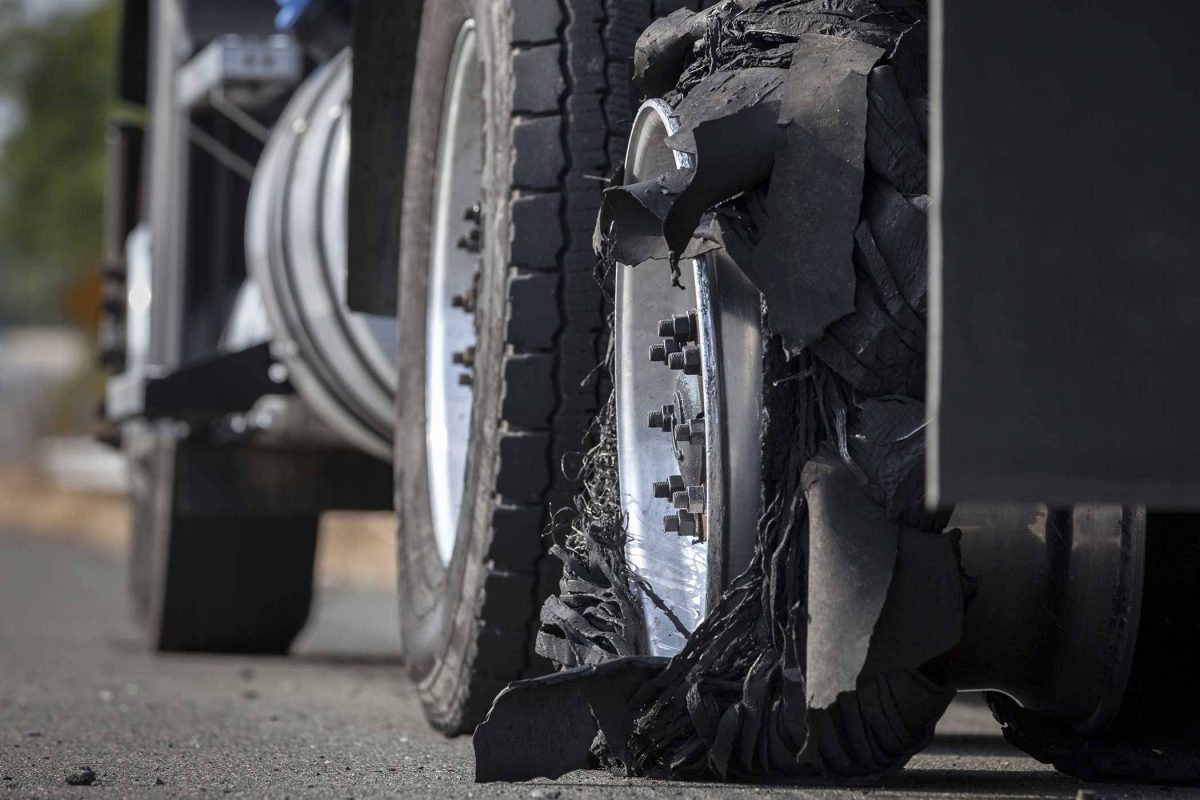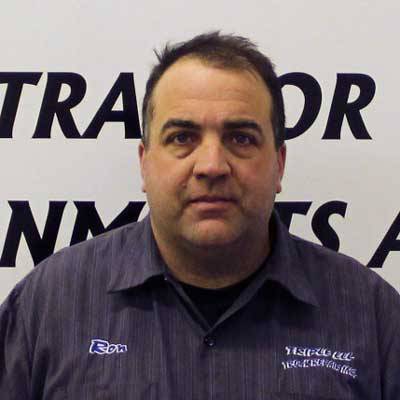Learn about the proper way to maintain your tires and increase their life.

1) Air Pressure Maintenance
One of the most effective things you can do is to maintain correct inflation pressure in your tires. This greatly affects tire wear and overall performance. Both over-inflation and under-inflation change the footprint and can result in irregular tire wear. If your tire is 100 percent inflated you get 100 percent tire life. If your tire is 20 percent under-inflated you lose 20 percent of your tire life. So what about over-inflation? If your tire is 20 percent over-inflated you will lose 8 percent tire life. With this being said, would you rather lose 20 percent for under-inflation or 8 percent for over-inflation? I would choose having a little too much air in my tire.
We all know that checking the pressure of your tires takes time and your dual wheels can be a real pain getting to those inside valve stems, but in the long run it will save your tires. One thing you can do to ease the checking pressures in your dual wheels is to install equalizers. Equalizers will keep the pressure between the two tires the same on top of the ease of just glancing at the window to see if the pressure is ok. We recommend checking the pressure of your tires daily or at least weekly. Make sure to check tire pressure when the tire is cold and never let air out of the tire when it is hot to get to your target pressure.
2) Vehicle Speed
Speed can cause irregular tire wear. If you have ever seen a tire with both shoulders worn it can be due to driving too fast. The faster you drive the center part of the tread on your tire expands and goes up. The shoulders of the tire cannot because the sidewall holds them in place. With the circumferences being different, the shoulders will wear faster because the shoulder circumference is smaller. If you drove 50 mph you would get 100 percent tire life. If you drive 70 mph you can loose 25 percent tire life. Bottom line is that if you want your tires to last SLOW DOWN. Speed kills tires!
3) Alignments
Did you know over time an alignment program could save you up to 35 percent of your tire life. Most might think your typical front-end alignment is enough. Front-end tow-out will cause excessive inside edge wear of both steer tires and front-end tow-in will cause excessive outside edge wear of both steer tires. So, what if you only have one steer tire with inside or outside wear? Well, you then have a front-end alignment problem along with drive axles misaligned. Misaligned drive axles are also part of an alignment and can greatly affect steer tire wear. The goal is to get the least amount of rolling resistance to your tires. Alignments are a key ingredient to good tire and vehicle maintenance.
4) Visual Inspection of Tires
Inspect your tires for wear regularly. If you can see a wear problem with your eyes, then unfortunately it’s probably too late. You can rotate that tire all around on your truck but it will continue to get worse. That’s why you need to check for feather wear. Feather wear is caused by the tire being pushed across the road surface sideways. The leading edge of the tire will be rounded off and the trailing edge will be fairly sharp. So how do I check my tires for feather wear?
Checking for feather is easy, place your hand on top of the tread of the tire and slide your hand across the tread. One way it will feel smooth and when you pull your hand the other way it will feel sharp. It will either be smooth in or smooth out. Smooth in is tow-in and smooth out is tow-out. This is feather wear and is an early sign your truck is out of alignment. If the tire is smooth both ways than the tire is fine and your alignment is probably ok. The direction of the feather wear can tell us a lot about what’s wrong with your alignment and what needs adjustment to correct it. So, just remember that if you can feel feather wear, an alignment can help but if you see a wear problem with your eyes an alignment will not correct that particular tire.
5) Run-Out
There are two types of run-out, lateral and radial. Lateral run-out is the side to side movement of the tire or wheel when it is rotated. Radial run-out is the up and down movement of the tire or wheel when it is rotated. Lateral run-out typically is not as critical as radial run-out in vibration problems. Some vehicles can begin to notice vibrations with as little as .045 to .060 thousandths of radial run-out. So, how do you check for run-out issues?
If you do not have a radial run-out gauge, all you can do is jack up the wheel you want to check and spin the wheel. Look across the top of the tire while it is spinning. Does the top of the tire move side to side or up and down? If you can see the tire moving in either direction then you might want a tire shop or an alignment shop to check it with a gauge. So, what causes run-out issues? Several things can cause run-out issues such as: mis-mounted tires on rims, off center mounted wheels onto hubs, or bent rims. Radial and lateral run-out can be hard to diagnose if you are not familiar with it and do not have the right equipment to get actual readings.
6) Vibrations
Vibrations can be a nuisance that can wear out suspension components but is it causing my irregular tire wear? Well it depends, first you need to figure out where the vibration is coming from. If it comes from the floor by your feet or the steering wheel then you have a front-end vibration. If it comes from your seat it is typically a driveline or drive axle vibration. Driveline vibrations can be the engine, clutch, transmission, drive shafts, and or drive axles.
Most vibrations from the rear of the truck do not come from alignment problems. If the vibration comes from the front-end of the truck it can be an alignment problem, tire or wheel issue. Diagnosing what speed your vibration occurs will help to determine the source of the problem. 30 to 40 mph could be an out of round tire, 45 to 55 mph could be a steer axle tow-out problem, 60 mph and over is a balance problem. Depending on the vibration and what is causing it, vibrations can lead to premature tire wear.





